British Rail’s Inter-City 125 is one of the most recognisable and successful trains in railway history but is now reaching the end of its operational days. Some units, however, are enjoying a second life, as EVAN GREEN-HUGHES explains.
It is hard to believe the iconic Inter-City 125, or High-Speed Train, is now almost 50 years old. This sleek, streamlined design icon revolutionised railway services in the 1970s, lifting average speeds by around 30mph to 100mph and proving capable of sustaining 125mph for hours on end. They have been the mainstay of services on the East Coast, Midland and Great Western main lines for decades and have proved popular with passengers and operators alike.
Now, however, the fleet has been largely replaced on front line duties by new units from the Hitachi stable, yet a considerable number have escaped to find further use with some entering preservation, some in charter fleets and with a handful even finding employment on freight trains.
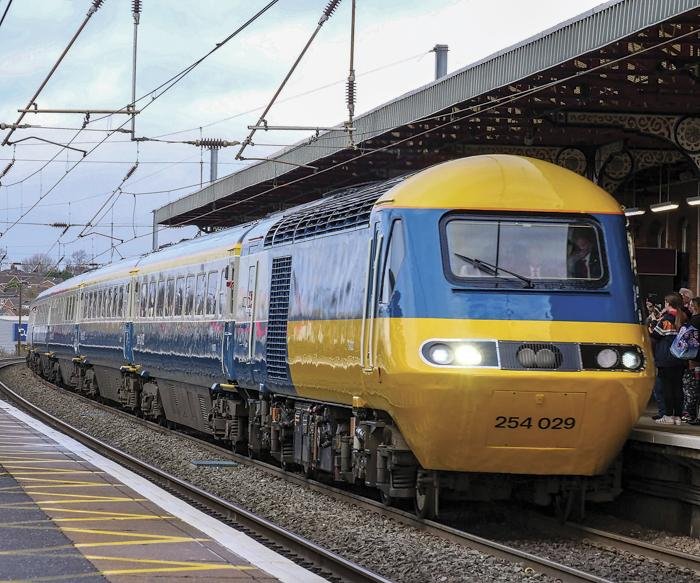
Above: The LNER ‘Lets Go Round Again’ HST farewell tour arrives at Grantham on December 21 2019 led by E43112 (254029) and tailed by W43006 (253003). Mike Wild.
The HST was developed to some extent due to the difficulties that were being experienced in the construction of the Advanced Passenger Train, which was running over budget and under expectations. BR’s Chief Rolling Stock Engineer, Terry Miller, was given just £800,000 and was told to develop a more conventional alternative which could still run at 125mph. To do this it was calculated that 4,500hp would be required, provided by using two diesel power cars, one at each end of the train, which would also allow operation in fixed formation.
Seventies flair
Construction of the power cars took place at Crewe, with their striking design coming from Kenneth Grange, while the accompanying carriages were built at Derby to the latest Mk 3 design. The new trains proved to be an instant success, with 161 sets being ordered and being introduced first on services to the West of England and later taking over on the East Coast Main Line (ECML). In the end the order was cut back and only 95 sets were actually made and plans to use them on North East-South West services and between Glasgow and Edinburgh were dropped.
As HSTs came into service, the impact on services was remarkable. The new trains cut an hour off the London-Edinburgh journey time while you could now travel from Paddington to Cardiff in 1hr 45mins. They were also a publicist’s dream because passengers loved them and now, for the first time since the 1930s, trains were appealing again. This enthusiasm was matched by a substantial increase in ticket sales and BR proudly proclaimed that this was ‘The Age of the Train’.
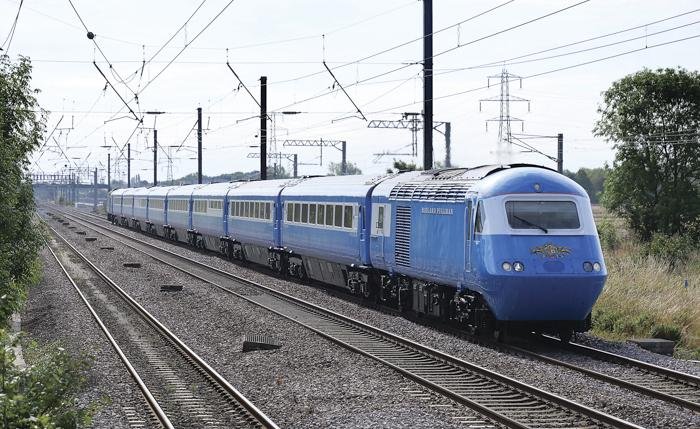
Above: Locomotive Services’ HST power car 43046, with 43047 at the rear, leads the Midland Pullman as 1Z44 Eastleigh-Scarborough on August 27 2022 at Marholm on the East Coast Main Line. Mike Wild.
Electrification of the ECML ten years later led to many of the HSTs being displaced to Cross-Country and Midland Main Line duties and upon privatisation the fleet was shared out between GNER, Midland Mainline, Great Western and Virgin Trains. This latter move led to some set reformations with Virgin, in particular, favouring short sets while other operators preferred to lengthen theirs by one coach.
As originally built, the HST’s power cars were fitted with Paxman power units, which had a reputation for producing a lot of smoke and noise and as a result in 1987 four Western Region examples were fitted with Mirrlees Blackstone MB190 engines, but this was unsuccessful. In the early 1990s, 39 power cars were fitted with Paxman VP185 engines and from 2005 onwards the MTU 16v 4000 began to be fitted, with the eventual result that the original Paxman unit became extinct.
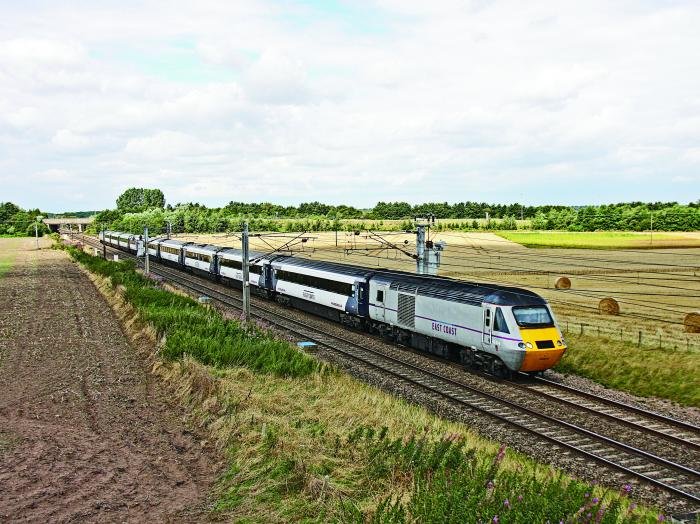
Above: Led by 43314, an East Coast liveried HST set forms 1E11 the 10.30 Edinburgh - Kings Cross service near Hambleton South Junction on August 15 2014. The service should have started in Aberdeen but the Aberdeen-Waverley leg of the journey had been cancelled. John Chalcraft/Railphotoprints.uk
New Millennium
There were huge changes for the HST fleet in the early 2000s due to the introduction of the Virgin West Coast and CrossCountry Voyager fleet with some sets laid up for a while, but these were soon deployed on ‘Project Rio’ which provided extra London-Manchester services during West Coast Route Modernisation works, while seven years later open access operator Grand Central took eight power cars and three sets of coaches for its North East to London services while the rest went to CrossCountry, Great Western and Midland Mainline.
With the HST reaching 40 years old and having achieved many millions of miles each it was inevitable that eventually they would have to be replaced, with the new rolling stock selected coming from the Hitachi Class 800 family delivered from 2017 onwards. The recently partially-electrified Great Western Main Line was the first to be converted to the new stock with those units that were still operating on the East Coast route next to be taken out of service. With new stock on order for the Midland Main Line it was thought inevitable that the Age of the Train would be coming to an end.
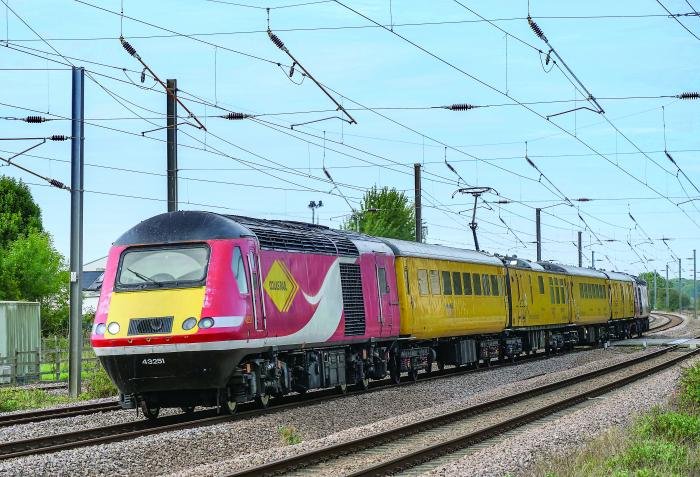
Above: Colas Rail Class 43 43251 leads a Network Rail overhead line inspection train, including test coach Mentor, through Helpston on October 4 2022 with 43257 at the rear forming 1Q18 Darlington South Sidings-London King’s Cross. Mike Wild.
Cascade
Happily, this proved not to be the case, as some HSTs found further use, largely on routes and duties they were not originally designed for. In Scotland there had always been an issue with the quality of services offered from the Central Belt to the north which were being worked by diesel units intended for inter-urban work rather than long-distance routes.
A solution was worked up for these services to be worked by pairs of HST power cars with four or five coaches between them, which would provide what the public would perceive as proper express trains but at the performance levels of the previously-used DMUs. As a result, 27 former Great Western power cars were transferred to Scotland and their accompanying coaches were fitted with retention toilets, power doors and enhanced disabled facilities. Known as Inter7City these trains are used between Edinburgh, Glasgow, Aberdeen and Inverness.
Although Great Western had dispensed with its HSTs on its principal routes some were retained for local and regional services in the South West. There, 24 power cars were formed up into 11 four-coach trains, being rebranded as ‘Castle’ sets, with modifications including the provision of power doors and retention tank toilets. While these sets have operated successfully since, time is running out as there are spare Class 80x trains due to changes in demand from the Covid pandemic, which - perhaps with other diesel units filling in - will replace them completely from December 2023.
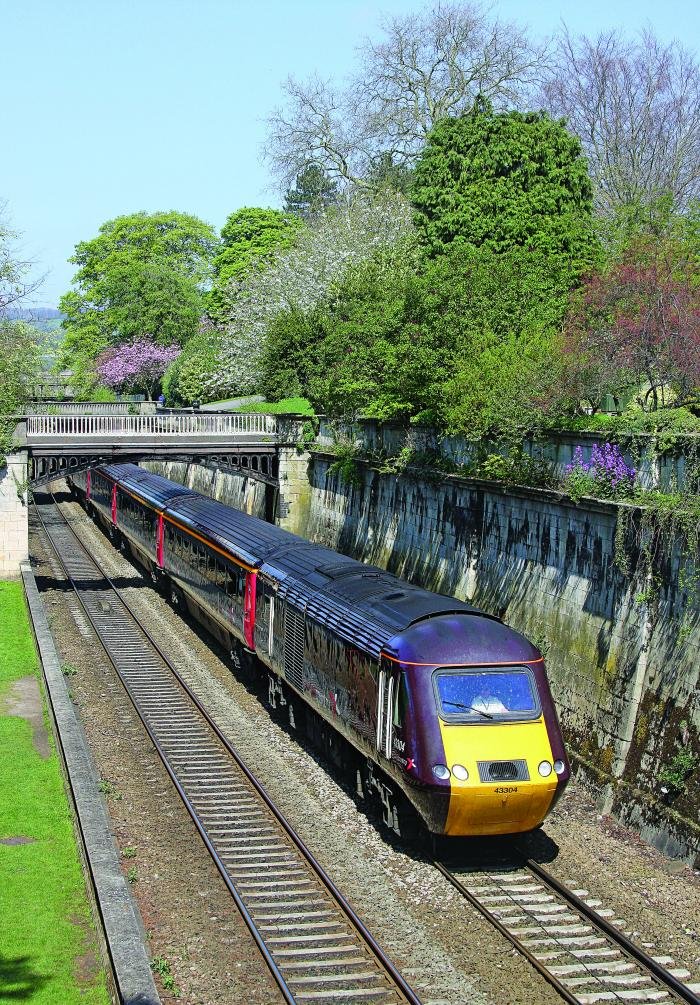
Above: Cross Country HST led by 43304 on the diverted 09.28 Penzance-Glasgow service passes Sydney Gardens, Bath on April 19 2009. John Chalcraft/Railphotoprints.uk.
Charter operation
In a surprising move, a small fleet of power cars and coaches was obtained by Crewe-based private train operator Locomotive Services Ltd. Two of the power cars and nine coaches have been reliveried in the style of the Midland Pullman train of the 1960s and have been offered out for charter work. This set is unique amongst HSTs in that all nine coaches are now First Class and all have been refurbished to high standards. The company also has a second HST set, which has five coaches, painted in a green Rail Charter Services livery. This was used for a scheduled scenic service over the Settle-Carlisle line as well as for charter trains. It could find work in Wales in 2023.
Some HSTs have found work outside the passenger sector. Network Rail uses the class on some of its Measurement Trains while Colas Rail also has some power cars that it supplies for similar work. However, perhaps the most unusual second use for HST equipment has come from a new operator, RailAdventure, which has acquired a number of power cars which it operates in back-to-back form essentially as conventional locomotives. These have been used for hauling stock moves, such as of Class 777 trains for Merseyrail, but also for moving track equipment such as Railvac machines around, producing the unlikely sight of two HST power cars hauling a single wagon on the main line.
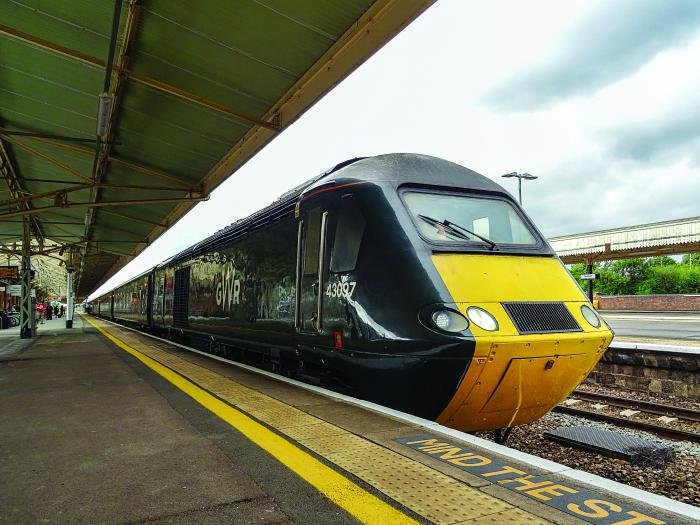
Above: GWR 'Castle' Class HST power car 43097 Castle Drogo awaits departure from Taunton, bound for Cardiff Central on August 11 2021. Mark Chivers.
The new trains cut an hour off the London-Edinburgh journey time while you could now travel from Paddington to Cardiff in 1hr 45mins.
Preservation
As might have been expected some HST sets have found their way into preservation, with at least one group having its eyes firmly set on using its sets back on the main line. The 125 Group was formed in 2011 and was responsible for the return to service of prototype power car 41001, and now has a fleet of four power cars. Although based at Ruddington, due to access issues it currently bases three of its power cars and a rake of eight coaches at the Midland Railway Butterley where they operate service trains on selected days. The group intends to use its trains on charter work and for this reason it is investigating the fitting of retention toilets to its carriages.
In contrast 125 Heritage, based at the Colne Valley Railway in Essex, has three power cars and a number of coaches and intends to confine its operation to this short line, where it hopes to build maintenance facilities. The group’s operational set is often used for public services and also is available for driver experience days, which have proved particularly popular.

Above: LNER HST power car 43277 arrives at Edinburgh Waverley bound for London King's Cross, as Scotrail Inter7City liveried power car 43177 rests between duties in the adjacent platform on February 25 2019. Mark Chivers.
A third HST group is 125 Preservation which has obtained two power cars and three trailers and which is shortly to move them to Railworld at Peterborough from store at Long Marston. The group intends to keep this set in full working order as the site is connected to the Nene Valley Railway but when it is not in use its buffet car, which is from the first-built production HST, will be used to provide refreshment facilities at the site.
The National Railway Museum has two production power cars as well as one of the prototypes and exhibits these at its sites in York and Shildon while the Crewe Heritage Centre has one as an exhibit, as has the Gwili Railway. Many of the displaced carriages have also found alternative uses, such as buffet cars at Stanhope on the Weardale Railway and Leicester on the Great Central while others have been converted to offices, accommodation and even holiday lets.
While the HST may have been displaced from its intended and original duties, some of the sets will continue in traffic for many more years to come - although given their high operating costs, it seems likely those in front line service will exit the scene rather sooner than the charter examples.
From a modelling point of view the revised sets, which are shorter than the originals, are easier to accommodate on a layout while the back-to-back freight operation brings with it a whole new range of possibilities. HM

